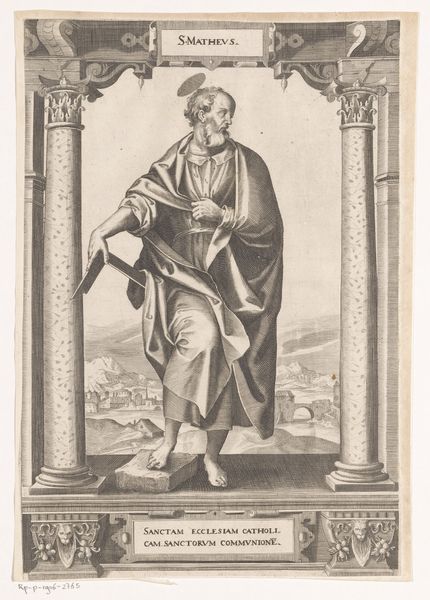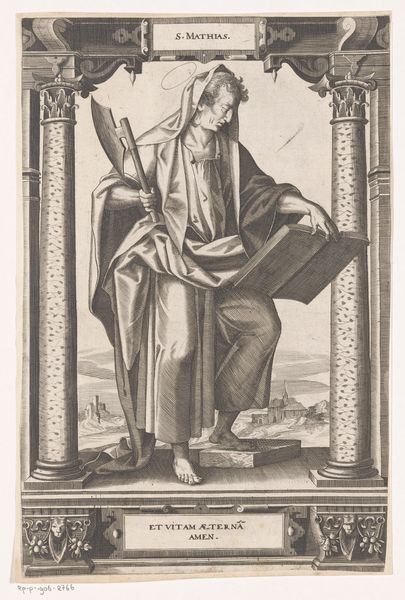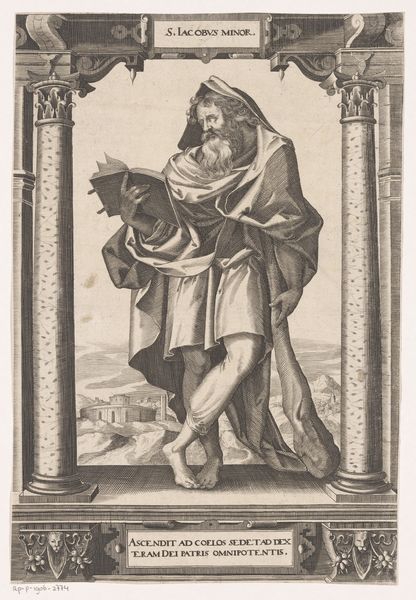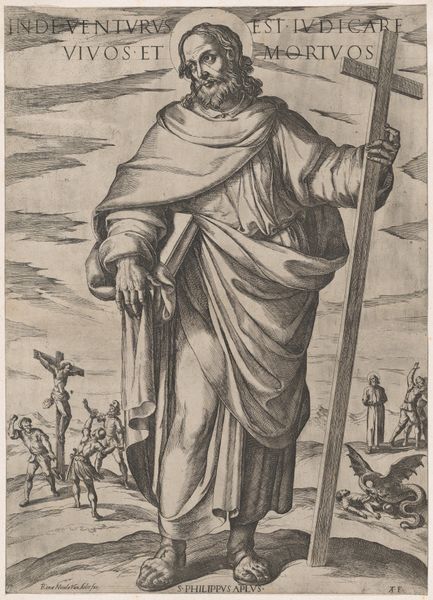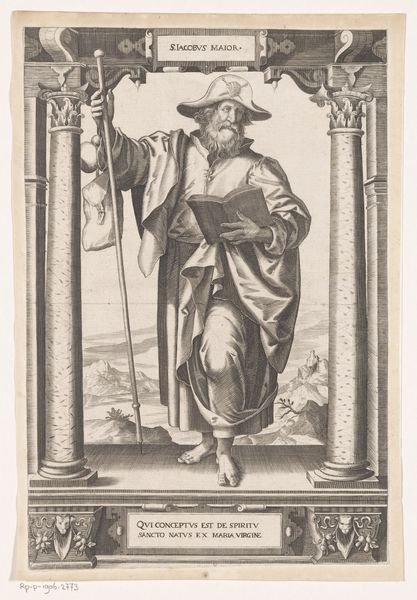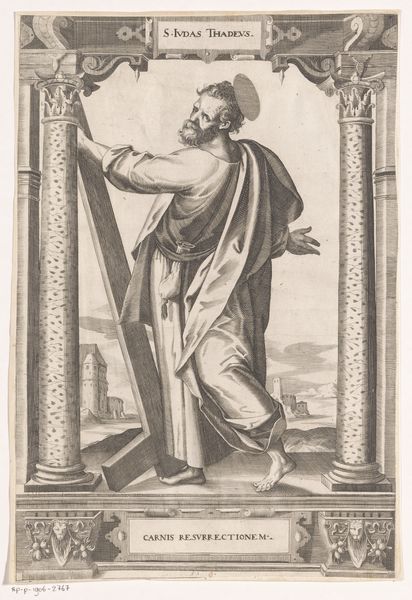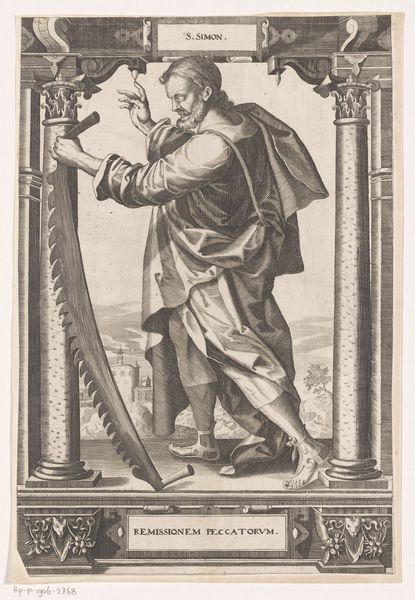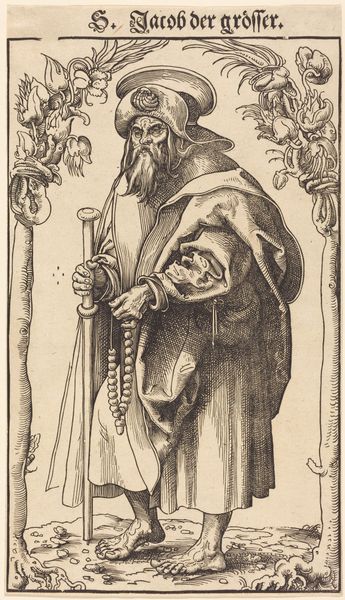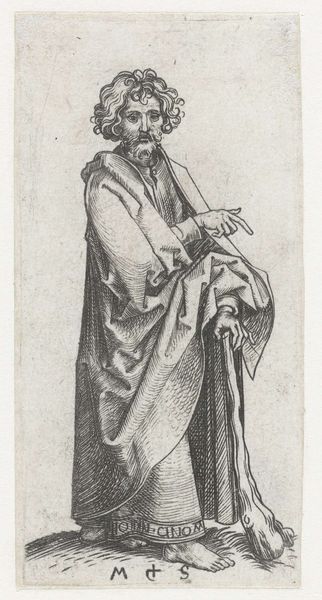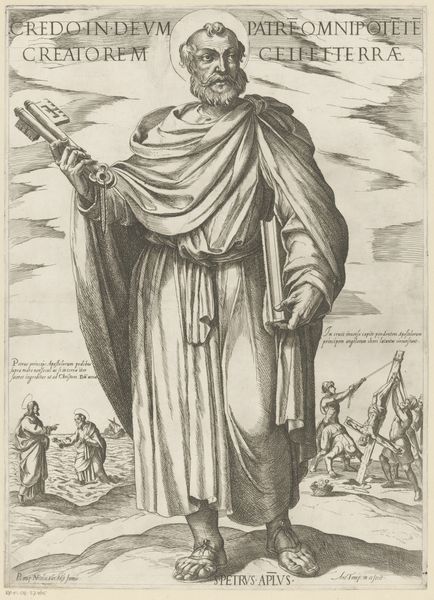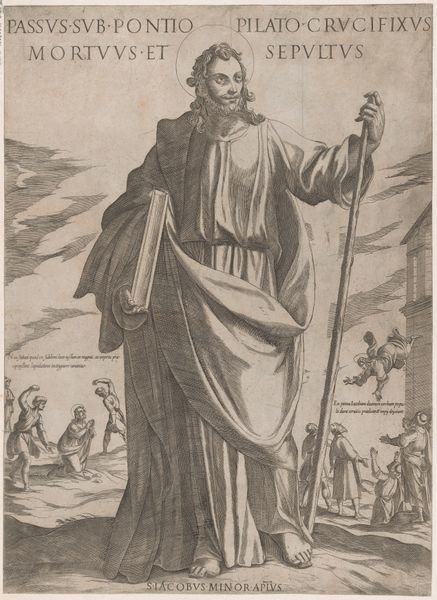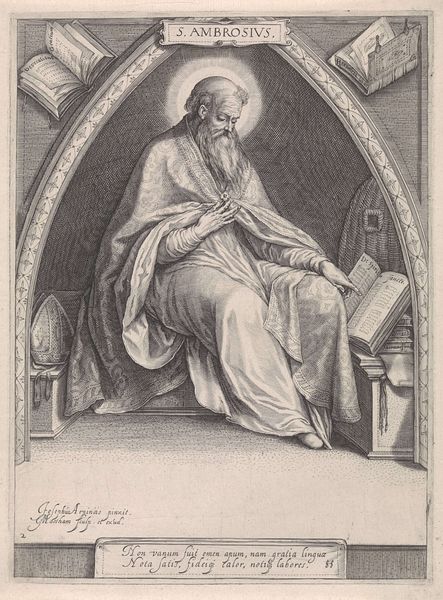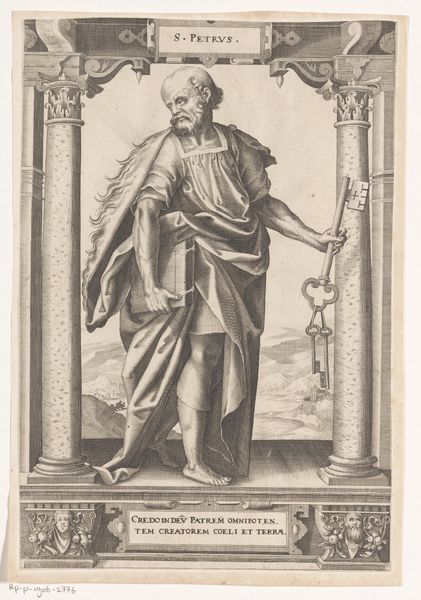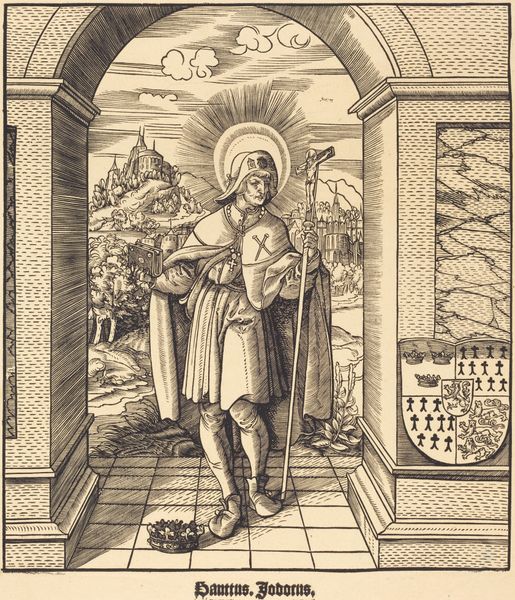
print, engraving
#
portrait
#
baroque
# print
#
sculpture
#
figuration
#
line
#
history-painting
#
engraving
Dimensions: height 330 mm, width 221 mm
Copyright: Rijks Museum: Open Domain
Editor: Here we have Dietrich Krüger’s "Christus als Salvator Mundi," an engraving from 1614. The figure of Christ is very imposing, and the level of detail achieved through engraving is really remarkable. How do you interpret this work from a formalist perspective? Curator: Indeed, the masterful use of line is striking. Notice how Krüger uses varied line weights to create depth and volume, particularly in Christ's robes. The composition is deliberately structured within an architectural framework, using columns and a pediment-like inscription panel. These elements effectively frame the figure, directing the eye to the central subject and suggesting stability and order. The contrast between the detailed foreground and the blurred background suggests a visual hierarchy. What compositional elements do you find most compelling? Editor: The globe Christ holds in his left hand—I keep being drawn back to it! It emphasizes a formal geometry juxtaposed with the texture of the engraving. Curator: Precisely! Consider also how that globe, topped with a cross, contrasts with the gesture of blessing with his right hand. These counterpoints are important for understanding how the artist builds tension within the visual field, layering shapes in a calculated manner. Ultimately, meaning comes from understanding the relationships and construction of these aesthetic elements. Editor: This focus on form reveals a lot about how the image's intended audience may have interpreted the religious messaging. Curator: Yes. This way of analysis directs our attention toward the deliberate artistry that shapes the work's meaning and emotional impact, regardless of historical context or cultural references. Looking closer can change the perspective!
Comments
No comments
Be the first to comment and join the conversation on the ultimate creative platform.
